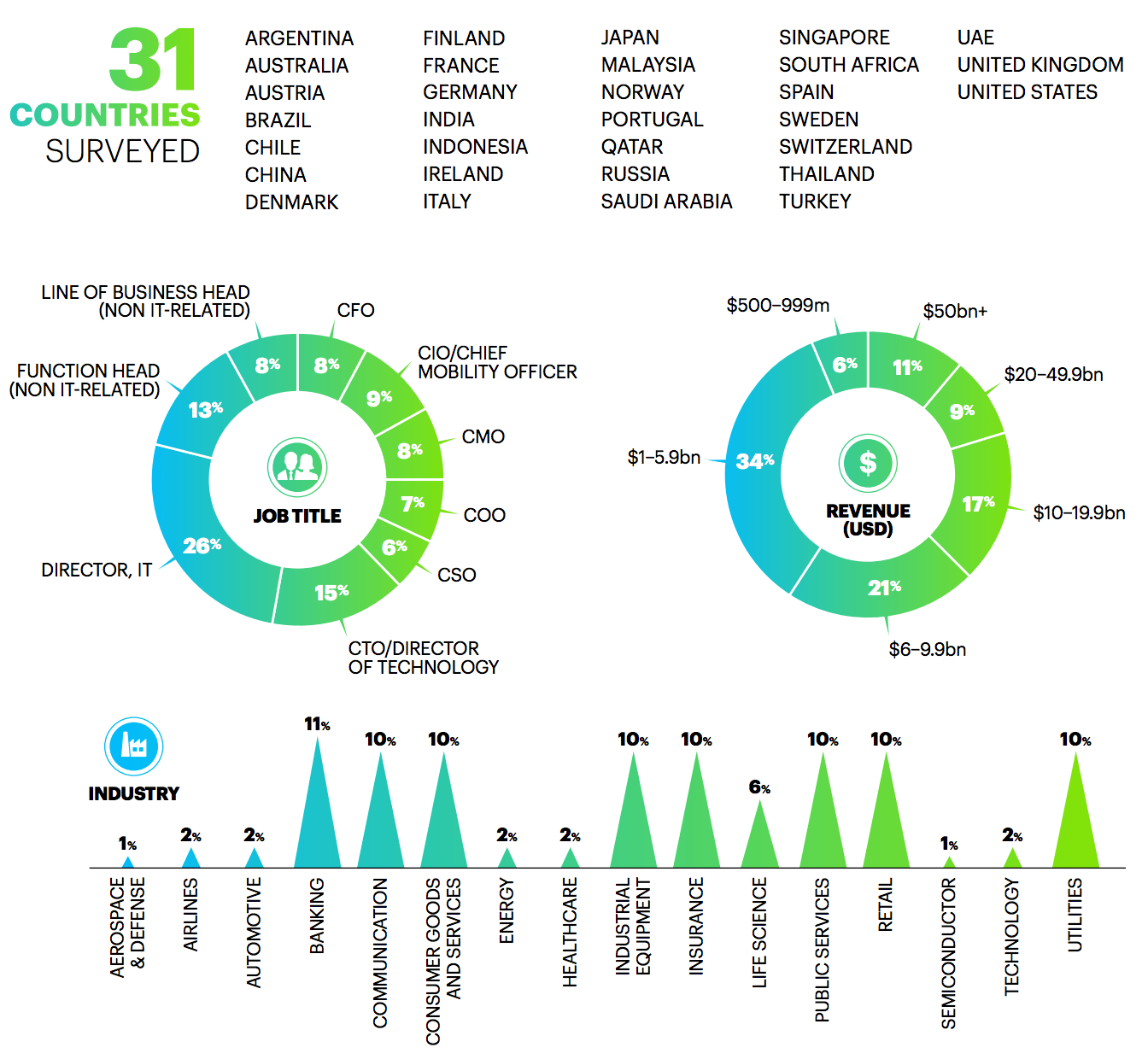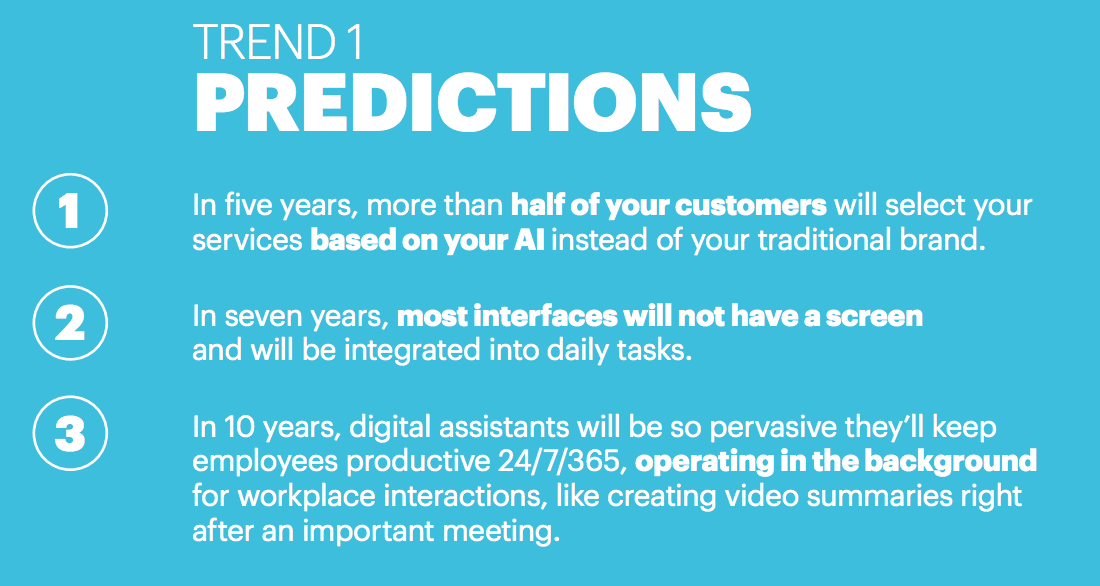
The following article about artificial intelligence for UX has been written by Paul Daugherty, Chief Technology and Innovation Officer at Accenture. Accenture is a Fortune 500 consulting and services firm with nearly 400,000 global employees. Editing and quotes added by the Emerj team. For information about our contributed material and publishing arrangements with brands, please visit our partnerships page.
Although artificial intelligence (AI) has been around for decades, the more-recent advances in ubiquitous computing, low-cost cloud services, near unlimited storage, data analytics and other innovations have caused its adoption to skyrocket.
Whether it’s chatting with Alexa, Amazon Echo’s conversation-based assistant, to get the weather forecast or request a car service pick-up, or using the Nest Learning Thermostat, which reduces energy consumption by learning your schedule and habits and programming itself accordingly, AI is becoming the new user interface, enabling a smarter and more-seamless interaction between humans and machines while playing a variety of roles to simplify — and therefore improve — the user experience.
Artificial Intelligence for UX – Current Possibilities
At the simplest level, AI curates content for people, like the mobile app Spotify suggesting new music based on previous listening choices. In a more significant role than simply that of an advisor, AI applies machine learning, leveraging previous experiences to guide actions toward the best outcome.
For instance, Stitch Fix, a U.S.-based online subscription and personal shopping service, not only uses customer-provided information related to size and style, but also analyzes a shopper’s social media interests, as well as advice from professional stylists more apt at interpreting specific customer requests, to select clothing that fits the customer’s preferences. By collecting data on how shoppers react to each new style and article of clothing sent, Stitch Fix claims to improve its recommendation engine constantly, finding new ways to delight returning customers with updated data.
Some AI applications aim to not only make interfaces smarter, while others are making many traditional interfaces disappear. Focused on usability, Amazon’s Alexa interacts with users by simply talking to them and acts on their behalf by handling tasks when asked to. This has advantages not just for consumers, but for the enterprise as well. For example, Amazon Echo owners not only spend half of their online dollars at Amazon, but they also spend more: research firm NPD reported (in an interview with Retail Dive) that Echo users spend twice as much on average with Amazon.
Findings from Accenture’s Technology Vision Study
Yet a key reason that some companies are aggressively exploring AI isn’t just because it provides better user experiences, but because it offers a dramatically better way to solve problems and, more importantly, gives them the power to do things not previously possible.
Given this, it’s no surprise that of the 5,400 technology and business executives we surveyed globally as part of Accenture’s Technology Vision 2017 — our most-recent annual report on key technology trends — 85 percent said they plan to invest extensively in AI-related technologies over the next three years; four in five (79 percent) said they believe that AI will revolutionize the way they interact with their customers; and more than two-thirds (68 percent) said they believe that AI will, over the next three years, significantly change or completely transform their organizations.
We’ve included the graphic below to display some detail about the background of the business leaders interviewed for this research:

And we’re already seeing signs that AI is moving into an even more prominent position — that of a digital spokesperson. By taking on this role, AI may become a company’s digital brand itself. It to be a matter of time before Alexa is even better known than its owner, Amazon, or Siri better known than Apple. Companies of the future who predicate their business on speech or conversational interfaces (who don’t have the decades of strong branding like Apple and Amazon) may be know for little more than the interface that their users interact with.

Despite the complexity of some of the underlying technologies that facilitate AI today, users don’t have to understand its complex technology to use it. Rapidly maturing AI technology is making technology interactions more powerful by making them more personalized and natural — in other words, more human (Alexa, Siri and some of today’s better chatbot experiences are showing this human promise already). Its reach is reflective of the value it brings to each and every interaction, empowering technology-driven interactions to replace traditional ones.
This development poses an opportunity for businesses, because customer loyalty is influenced powerfully by the brand experience of customers and clients. If a company can get the AI customer experience right, it will have a better chance to retain existing customers and win new ones, thanks to a consistent, positive brand experience and extreme personalization that no human could ever provide. Some of the current initiatives of AI in banking, retail, and consumer technology are clearly pushing for UX as the intended ROI.
The Realities of AI Implementation
Companies who want to explore AI UX applications for their own business have some potential action steps to take: First, take existing communication channels and determine how these can be made smarter (using inspiration from other successful conversational interface or voice interface applications can be useful here). Second, look at every customer and employee interaction and ask yourself how they can be improved through AI. Finally, look at new interfaces beyond the screen and consider how new channels can enable multidimensional conversations.
This change must start at the top. The C-suite should understand the value of reassessing how people interact not just with technology, but also with their business. By placing AI at the heart of the customer experience, companies will be able to move from merely transactional customer interactions to multidimensional, omnichannel conversations covering text-based chats, spoken conversations, gestures, or even virtual reality. Businesses that recognize AI as more than just a business tool — and as the potential face of their business — are poised to gain a competitive advantage.
(Editor’s note: Readers of this article may be interested in our full podcast interview with Paul Daugherty on the economic impact of AI.)
Header image credit: cssanimation.io






